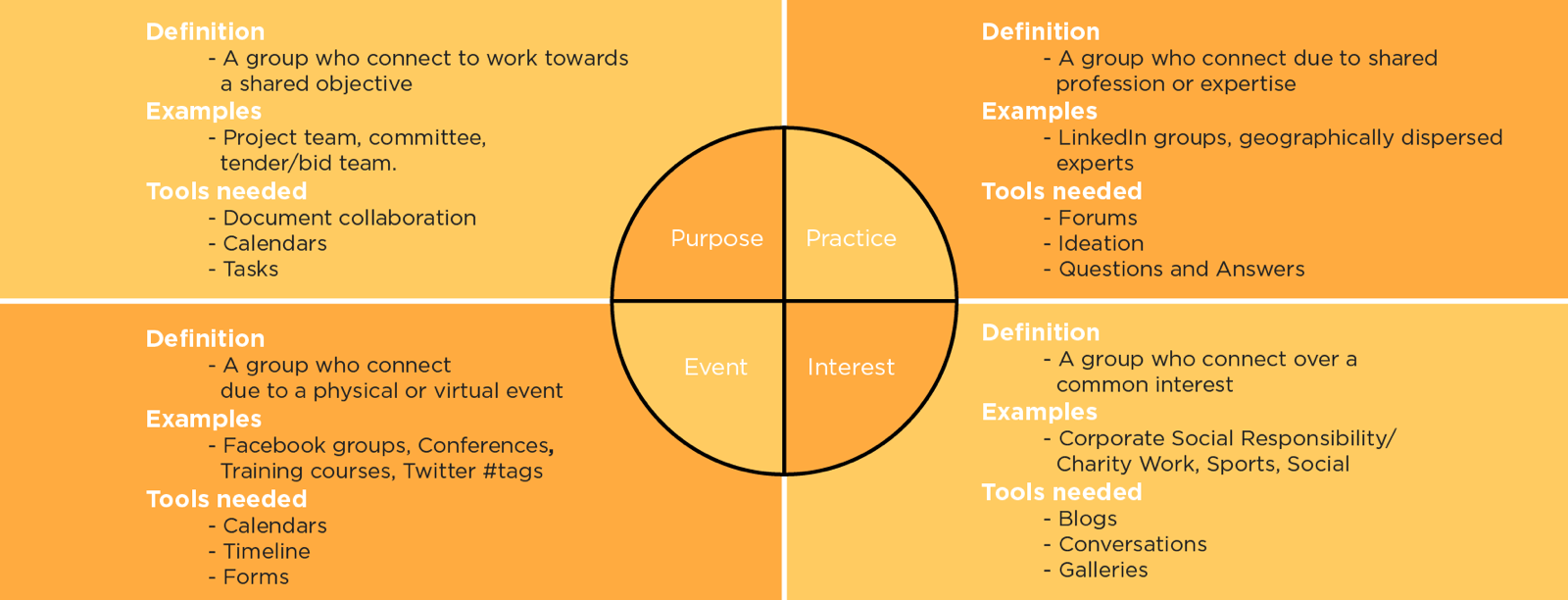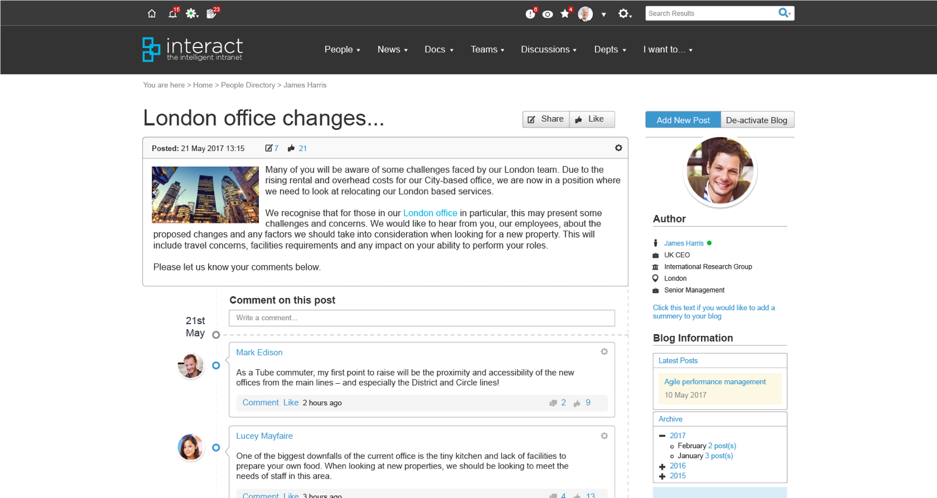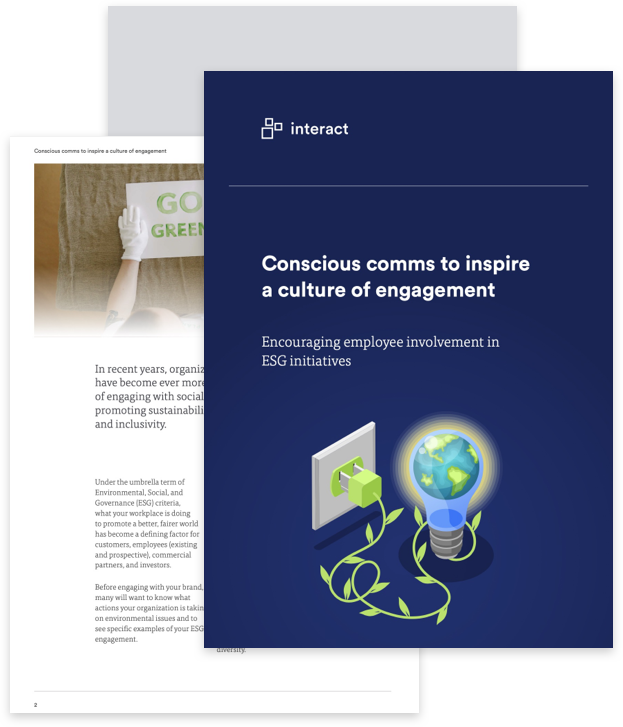Social Employee Advocacy: 5 steps to get your employees promoting your brand
What is Social Employee Advocacy?
I think it’s best in this situation to start with a clear and relevant example of what it’s not. In the last few weeks, transportation tech giant Uber has become embroiled in a sensational tale of appalling workplace culture that kicked off when an ex-employee wrote a blog post about her experiences there.
It’s not dissimilar to the story that broke a little over a year ago about Amazon. Both tell stories of backstabbing, misbehaviour, and little to no recourse for poorly treated employees. The main difference is that while Uber’s CEO promised immediate action, Amazon’s chose to excoriate the New York Times for listening to his “biased” former employees.
Free ebook – Conscious comms to inspire a culture of engagement
No matter how much you spend on professional branding services, nothing you do will affect public perception like the message delivered by your employees – both current and former.
As we argue in our previous blog, employer branding – that is, the strategy and actions an organization takes to influence internal and external perceptions – is very different from an employer brand. That is shaped and driven by employees and other stakeholders: they are your most powerful advocates, or your most damaging critics.
Uber and Amazon were both dealt major blows, and aside from shrinking their customer base, these news stories likely harmed their employer brand and subsequent ability to acquire and retain top talent in the industry.
When we talk about employee advocacy, we’re talking about the opposite of stories like these. Employee advocacy is amplifying the most positive aspects of your brand by getting people within your company to shout about their experiences. For organizations looking to better retain employees, this can be a huge boon.
So, how can you build social employee advocacy in your organization?
1. Build internal communities
Before you can develop an employee advocacy program or encourage staff to endorse your organization externally, you need to establish a positive culture and engagement with your organization internally. If your employees feel part of a community and have positive experiences of work, they’re more likely to advocate your business to others.
One of the ways to support this is through nurturing internal communities, which will help employees connect with one another and support a strong internal culture. While it’s ideal to let communities develop all on their own, there are tools you can use to start them from the top-down as well.
Your company intranet is an ideal place for employees to connect on matters both work related and otherwise, and it often blurs the line between the two. Communities on your intranet may spring up organically among members of the same department or professional interest at first, but they have the potential to transform into semi-professional groups that make employees excited enough to bring that experience outside the office, creating that employee advocacy you’re looking for.

(Types of communities and the tools they need to thrive: taken from our on-demand webinar, ‘Intranets: Are they still relevant?’)
We published an article a little while back sharing tips garnered from psychology for building successful online communities. Among the most salient ideas were to start small and grow steadily, as well as choosing a relevant topic around which people would rally. Start with your intranet forums, soliciting discussion and answers from people on your topic of choice. Move from there into curating other types of content to share through team pages or blog posts, and eventually organize events to help build everyone’s excitement.
Free ebook – Conscious comms to inspire a culture of engagement
2. Empower employees
Workplace conflict, change and challenges are a reality of any organization. If Amazon’s example can teach us anything, it’s the potential cost of failing to prepare for and respond appropriately to employee disgruntlement – and the damage that can have on an employer brand.
One of the key steps to developing social employee advocates, therefore, is to empower them with the opportunity and means to give feedback.
This is an instance where social technology can play a vital role. Using a company intranet, HR staff can not only host guidelines for anonymously reporting issues or helpful hints for conflict resolution, but facilitate top-down communication and proactively seek employee feedback.
Communicating openly and transparently about change using two-way collaboration tools gives employees visibility of what is happening, helping to secure employee trust and build confidence in the organization. Using social features such as commenting, liking or forums that empower employees with a voice, you can ensure your staff feel their opinions are listened to and heard. This prevents ill-feeling or unhappiness from festering or becoming something that breeds contempt, preventing PR nightmares such as the Amazon fiasco.

Ultimately, we can’t get it right all the time. However, we can safeguard against the worst by affording our employees the respect they deserve – and when individuals feel they are heard, they are more likely to advocate for the business going forward.
3. Amplify the voices of internal advocates
Branding campaigns start from the inside out. That’s because creating social employee advocates can be a snowball effect. Once you start getting people excited about your company, the feeling spreads among the rest of the workers (not to mention the public) until you have everyone shouting about how great you are.
The first step to amplifying internal voices is to determine who is ready and enthusiastic about being an advocate. Next, you’ll want to give these folks the power to broadcast their voices around the organization.
Again, a shared collaboration platform can prove a powerful tool in this instance. Maybe ask permission to take some of your advocate blogs and send them around to start discussions among their peers. Actively seek contributions from enthusiastic employees for internal communications and use an internal reward or recognition program to show appreciation for those who put their voices and ideas forward.
If you can promote this centrally, the rest of the company gain visibility of how those individuals are recognized: serving as an incentive for others to follow that example.
4. Turn internal advocates into external brand ambassadors
You’ve created the foundation for a positive culture and cultivated internal communities. You’ve given employees a voice. You’ve ensured positive feedback is amplified internally. Following these steps, you should be in a good position with a group of happy and secure employees who will gladly talk about their company. In other words, you’ve got employee advocates!
The internal portion of your journey isn’t over, but next it’s time for some serious work in promoting your employees’ voices outside of the company.
Free ebook – Conscious comms to inspire a culture of engagement
Social media is widely recognized as one of the most powerful and wide-reaching platform for promoting employer branding. Although many executives shy away at the perceived risk of what employees may say and share on social media, the truth is, employees are going to talk about your company regardless. The important thing is to recognize and manage this as best as possible.
Ensure you have a clear policy on social media best policy, outlining what is and isn’t acceptable for your employees to share online. Run external branding campaigns to support your efforts, explaining what it is you’re looking to achieve and providing employees with the necessary materials or posts to share on their own channels – for example, highlighting on your intranet when you’ve tweeted something you’d like employees to promote, or running a structured campaign to source reviews on your company Glassdoor profile.
Twitter has already seen some great examples of companies who have championed social employee advocacy as a branding tool. In our blog on employer branding, we show Adobe’s use of the #AdobeLife hashtag which the company uses as part of a wider recruitment initiative to show life ‘behind the scenes’ of the organization. More broadly, _the #workfamily hashtag is used widely my employees advocating for their organizations on social media.
Whether you create your own hashtag or simply highlight the ones you’d like your employees to use, these small yet simple tactics can dramatically increase visibility of what your employees are sharing – supporting your employer brand.
5. Tell the story and celebrate success
The danger of running any employer brand initiative is that it can quickly lose momentum – particularly when employees don’t understand the purpose of what you’re trying to achieve, or what’s in it for them.
Ensure continued buy-in by talking about the results of social employee advocacy and how that has shaped the direction of your business. For example, if an individual employee has championed your business and helped secure a new client or a referred a new employee who has gone on to join your business, shout about it. Use leadership blogs, forums, your internal communication channels. Recognize the efforts of the individual and use it as an example for the rest of your business.
If you have a structured ‘refer a friend’ program or similar, even better. While we may hope that loyalty and pride in an organization will be enough to trigger employee advocacy, it’s undeniable that an incentive helps.
Social advocacy: a powerful differentiator
Research shows the most credible form of advertising comes straight from the people we know and trust: 83% of respondents across 60 countries agreed that they trust the recommendations of friends and family, according to the Nielson Global Trust in Advertising Report. Not far behind were consumer opinions posted online, at 66%.
Employees present an invaluable opportunity to promote their organization in a way that will be well-received by prospective customers and employees alike. According to research compiled by social software providers Hootsuite, just some of the benefits include:
- Employees can increase the social reach of a top brand by 4000%
- 57% of socially engaged organizations are likely to increase sales leads
- 58% of socially engaged organizations are more likely to attract top talent
Fundamentally, everyone wants to work for a company that they know has a positive culture, where they’ll be treated fairly and listened to should any conflict ever arise. People are skeptical of advertisements because they’ve been inundated with them all their lives. They won’t believe an ad without a review to back it up.
Your employees are the ultimate reviewers for your company. They have no reason to be untruthful, and others therefore have every reason to believe them. If you create good employee advocates, who enthusiastically talk up their experiences at your organization, you’re sure to improve both recruitment and retention, alongside many of your other strategic business objectives.

